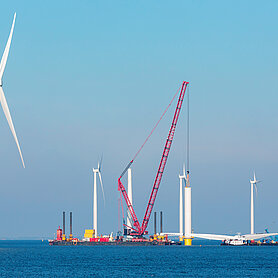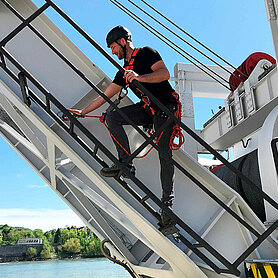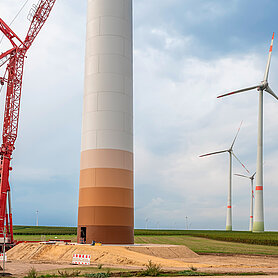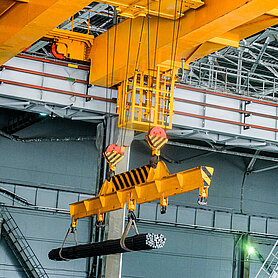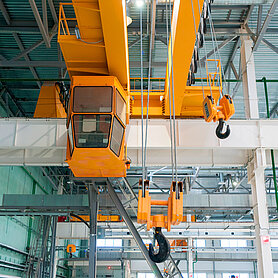Crane
Fall protection and personal safety on a crane


TAURUS rail system
The flexible TAURUS HORIZONTAL from INNOTECH, for all substructures, provides people in fall hazard locations with the option of securing themselves optimally to the mobile anchor point or to the guided type fall arrester.
SHOW SYSTEMBARRIER guardrail system
BARRIER-MACHINE SAFEGUARDING is a system which secures edges on machinery and in an industrial environment. The different requirements in various areas of industry can be solved individually thanks to the flexibility of BARRIER.
SHOW SYSTEMPSA Personal protective equipment
Intuitive use, optimum comfort, top quality: Just some of the characteristics of our anti-fall harness systems. The PPE STRING harness system is available in Basic, Comfort, and Pro models. All harnesses allow optimum freedom of movement and guarantee that the user is caught safely in the event of a fall.
SHOW SYSTEMThe danger when working on cranes resides principally in the fall height. Depending on the crane type (travelling crane/hall crane or mobile crane system), the safety solutions for protecting against falls differ. However, both share the characteristic that servicing or maintenance tasks both involve working at height, and therefore require a fall protection system.
In principle, a distinction can be made between cranes used indoors and those used outdoors. The travelling crane/hall crane is always located in the interior of a building (e.g. an industrial building). Here it is above all a case of protecting against falls along the crane runway. Runways allow a crane to move forwards and backwards. The pillars along this runway are used for attaching a fall protection system. The particular challenge that this creates in terms of personal safety results from the large pillar separations, usually between 7 and 8 metres.
The situation with mobile cranes is different: Here, the principal challenge is to protect against falls from the crane boom. In the course of assembly and dismantling, people move along the boom arm at a height of approx. 3 metres. A fall over the edges to the left and right of the boom arm, would have fatal consequences for those involved. For this reason, personal safety equipment must be mounted on the upper surface of the crane boom.
In general, when working on a crane the danger is at height. For a hall crane, the conductor line on the crane represents a further danger source. Because of making contact with the power transmission cables, a fall from the crane boom onto the conductor line would very probably end fatally.
For mobile cranes too, the greatest potential risk is the working height. A free fall from a height of 2 or 3 metres would also have fatal consequences for the person working on the crane boom. Wet, cold, and lack of attention can quickly result in a slip over the fall edge on either side. For this reason, it is necessary to select professional safety solutions which satisfy all requirements.

TAURUS-HORIZONTAL
Rail system for horizontal use
The TAURUS HORIZONTAL rail system is used wherever movements along a horizontally running pathway need to be protected from a fall risk. Regardless whether along roofs, facades, for overhead use, in industry or in connection with photovoltaic ...

AIO-LIFELINE-SYSTEM-PASSABLE
All-in-one lifeline system, passable
The AIO LIFELINE SYSTEM PASSABLE is used wherever a horizontal surface must be protected. Regardless whether along roofs, facades, in industry or for photovoltaic systems, it provides optimum protection against falls from a height. Neither ...

VERT-LIFELINE SYSTEM
All-in-one lifeline system, vertica
The VERT LIFELINE SYSTEM is used wherever vertical ascents or descents require protection. Regardless whether ladder access, shelving/mast systems (with or without ladder) or steel constructions with access systems, it provides continuous fall ...

PPE STRING
PERSONAL PROTECTIVE EQUIPMENT PPE
Intuitive use, optimum comfort, top quality: Just some of the characteristics of our anti-fall harness systems. The PPE STRING harness system is available in Basic, Comfort, and Pro models. All harnesses allow optimum freedom of movement and ...
Proven personal safety on cranes – from INNOTECH®
The possible safety solutions depend on whether a hall crane or a mobile crane system is to be protected. For mobile cranes it also depends on the type of crane, because the fall protection system must be optimally adapted to the relevant requirements and the specific situation. We list here two possible crane types, and the options for protecting them against falls:
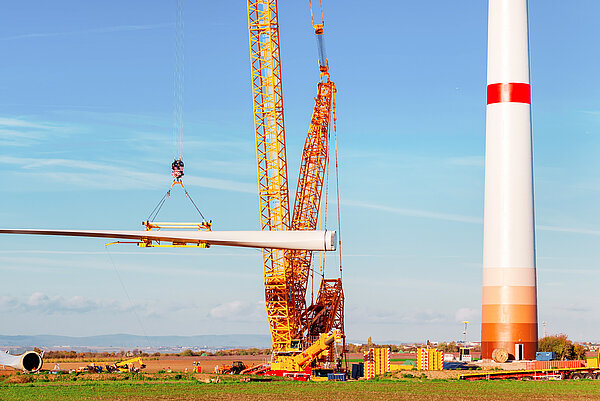
Fall protection on a hall crane
For personal safety on hall cranes we recommend a lifeline system – for example the AIO PASSABLE OVERHEAD LIFELINE SYSTEM in combination with a fall arrest device , or also the IND lifeline system. To protect the crane runways, the AIO lifeline system is attached along the posts of the hall perimeter, and it provides optimum protection against falls. The overhead lifeline system can easily bridge fastening distances of up to 7.5 metres. The IND lifeline system was developed especially for industrial use, and is characterised above all by the large fastening distances of up to 15 or 30 metres.
Note: For this application area, the lifeline system is used exclusively as a restraint system.
Fall protection on a mobile crane
For a mobile crane system, personal safety must be ensured along the crane boom to left and right, because of the fall edge on both sides – without having a negative effect on the functionality of the crane. For this application area, the TAURUS rail system from INNOTECH® is particularly suitable. If a fall occurs, then it is stopped immediately by the system and its matching slider.
Note: All these solutions represent individual protection. The use of personal protective equipment(PPE) is strictly mandatory.
However, it is not only crane runways that require fall protection. Entry and vertical ascent and descent on the cranecan and must be secured against falls. One mode of ascent is by means of a ladder permanently installed on the crane. TAURUS VERTIKAL is a system which is particularly suitable for secured ascent and descent. The TAURUS ALLROUND system can be used to secure the transition from the vertical to the horizontal. The high-quality rail system withstands many different weather conditions, which is particularly important, especially for cranes outdoors.
Secure vertical ascent and descent can also be achieved by means of the VERT LIFELINE SYSTEM. The vertical lifeline system is attached to the respective ladder using a clamping solution, and thus ensures continuous safety. In the machine area of mobile cranes, which is used for inspection tasks, one of the options for fall protection is the BARRIER guardrail system. The collective protection provided by this system reliably secures all persons located on the machine while they perform these activities.
For other crane types or special situations, we can provide customised safety solutions, because mobile cranes in particular vary greatly in their construction – and therefore also in the challenges in terms of personal safety and fall protection system.
Benefits of a fall protection system in industry
- Protecting the life of the people located on the crane by applying a fall protection tailored to the crane
- Continuously protected movement along the crane and also during access, ascent, and descent
- Prevention of employee absence caused by a fall, because all areas have been equipped with professional safety solutions
- Complete elimination of a fall risk, thanks to a safety concept adapted to the situation and the crane and the corresponding installation of a fall protection system
Challenges for personal safety in industry
Travelling crane:
- Fastening distances: When protecting travelling cranes, it is necessary to cover large fastening distances between the individual pillars. The fall protection system selected must be able to fulfil these requirements.
- Small fall heights: Both for a hall crane and when protecting the boom on mobile cranes, the existence of a small fall height represents a particular danger which needs to be neutralised by means of a professional safety solution.
Mobile cranes:
- Cable deflection: Because of cable deflection, the fall height from the crane boom is too small to allow the use of a lifeline system, and so in this case a rail system should be chosen.

Tübingen: AIO and TAURUS secure PV system

Tübingen: Safety at the PV system

Innovative project in Tübingen
The combination of Novotegra’s PV substructure with INNOTECH’s flexible fall protection systems provides significant added value for both fitters and…







